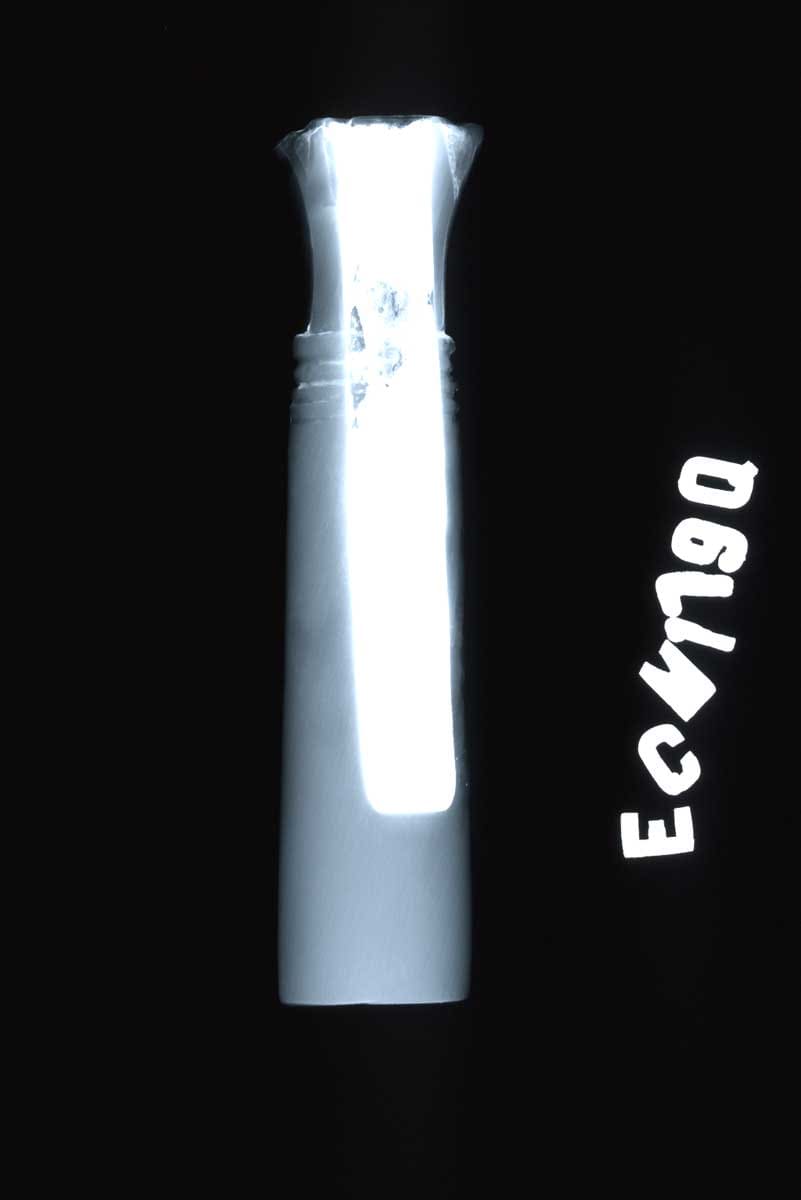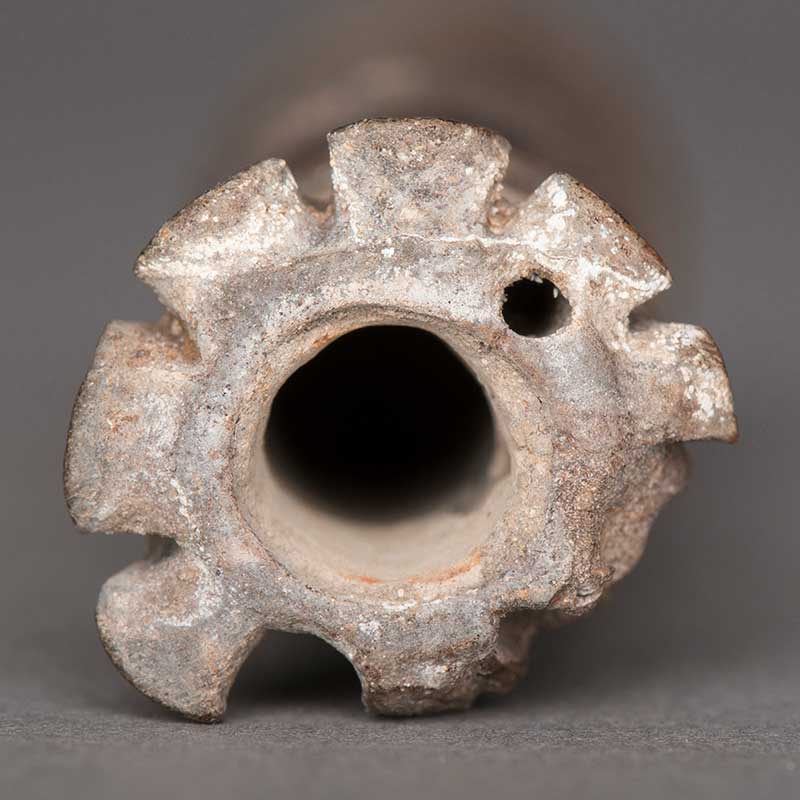Providing for the Afterlife: Ancient Egyptian works from Eton College
Kohl Tube in the Shape of a Palm Column
By Ashley Fiutko Arico, Monica Herrera, Sanchita Balachandran and Skylar Hurst

Description
Carved from wood, this elegant kohl tube was designed to store eye-paint. The slender cylindrical container takes its shape from the palm column, an Egyptian architectural element usually rendered in stone. In this example, eight palm fronds rise from an undecorated cylindrical shaft, flaring out slightly at the top of the vessel. At the base of the fronds, a series of four horizontal incised lines represent the ropes used to lash the fronds together. The lines are filled with the yellow pigment orpiment, accenting the rich brown wood. A small hole drilled into the top of the vessel indicates where a swivel lid (now missing) was attached, protecting the kohl that it once contained. Kohl (eye-paint, called mesdemet by the Egyptians) was worn by both men and women from the earliest periods of Egyptian history.
Technical Research
This kohl tube is carved from a single piece of wood and was previously fully painted, as evidenced by the presence of traces of pigment over the entire surface. Based on examination by undergraduates Monica Herrera and Skylar Hurst, a yellow/orange pigment is still clearly visible on the four horizontal bands near the top of the tube. X-ray fluorescence analysis showed the presence of arsenic and iron, suggesting that an arsenical pigment–either yellow orpiment or orange realgar–might be present here, and might have been mixed or layer with a yellow and/or red iron oxide pigment. X-rays of the object revealed an interesting technical detail that remains mysterious. A dense, radio-opaque material (which appears white in the image) appears as a tubular shape on the inside of the object. The even thickness of this material in the x-ray, and the thickness of the edges of this material when viewed through the microscope suggest that this may possibly be a metal sleeve inserted into the wooden form. Both white and orange corrosion on the interior of the tube opening may possibly suggest an oxidized metal sleeve. X-ray fluorescence analysis identifies the presence of lead at the tube entrance, offering a possible corroboration of this hypothesis.

